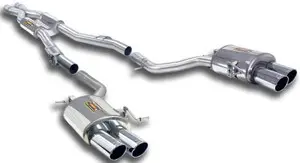
What is a catalytic converter and what is it for?
Content
Cars are made up of many complex parts. Understanding every mechanism in your car requires years of training and experience. However, catalytic converters play an important role in your vehicle's emissions, fuel efficiency, and overall health, so it's vital to have a basic understanding of catalytic converters.
Everyone has seen how big 18-wheel trucks produce huge clouds of exhaust gases, but how harmful are these exhausts to the environment? The catalytic converter converts harmful pollutants from your car's engine into environmentally friendly emissions. Since the invention of catalytic converters, vehicle emissions harmful to ozone have dropped dramatically. Keep reading to learn more about catalytic converters and how to keep your car running for years to come.
History of catalytic converters
Cars did not always comply with environmentally friendly regulations. In 1963, the United States passed the Clean Air Act to reduce the amount of harmful pollutants emitted from stationary and mobile sources. The U.S. auto industry boomed in 1963 with over nine million cars produced, raising concerns about harmful emissions. In 1965, the federal government amended the Clean Air Act to include the first federal vehicle emission standards in the National Emission Standards Act. All cars made in the US after 1965 had to meet emission standards set by the federal government.
French mechanical engineer Eugène Houdry invented the catalytic converter in the 1950s to reduce the amount of harmful pollutants emitted from car smokestacks and gasoline engines. The US began mass-producing catalytic converters in the 1970s to meet emission standards set by the federal government. Since then, every car made in the US has been fitted with catalytic converters.
What is a catalytic converter?
Catalytic converters are attached to the bottom of your car in the exhaust system between the muffler and the tailpipe. The catalytic converter consists of a large metal body, two lines and a catalyst made from precious metals such as platinum, rhodium and palladium. Your car's exhaust passes through a pipe to a honeycomb catalyst, where harmful molecules are converted into environmentally friendly compounds.
For example, without a catalytic converter, harmful molecules produced by your car, such as nitric oxide and carbon monoxide, would freely enter the atmosphere. Precious metals in catalytic converters change the composition of nitrogen oxide and carbon monoxide into environmentally friendly molecules of carbon dioxide and nitrogen. The two main types of catalysts used in automobiles include:
Recovery Catalysts
The recovery catalyst separates the harmful elements of nitric oxide into individual nitrogen and oxygen molecules - platinum and rhodium bind to oxygen molecules, allowing harmless nitrogen molecules to pass through the exhaust pipe. The remaining oxygen molecules help further reduce harmful emissions through oxidation.
Oxidation catalysts
Oxidation catalysts burn harmful hydrocarbons and carbon monoxide to form individual oxygen molecules. Platinum and palladium use the freed oxygen from reduction catalysts to bind additional oxygen molecules to carbon monoxide and hydrocarbons, creating harmless carbon dioxide and water.
The catalytic converter is an important emission control device in vehicles. Without catalytic converters, dangerous hydrocarbons and nitrogen oxide molecules destroy the Earth's ozone layer and further contribute to greenhouse gas emissions into the atmosphere.
How to know if your catalytic converter is working
Catalytic converters reduce vehicle emissions and improve fuel economy and vehicle life. The ECU, your vehicle's electronic control unit, constantly collects data from the catalytic converters to ensure that the engine receives enough oxygen to complete catalytic conversions and burn fuel efficiently.
Engine warning lights can indicate inefficient fuel combustion due to damaged catalytic converters. Always seek professional catalytic converter services if your vehicle is slow, has trouble accelerating, or emits a sulfuric rotten egg smell. Replacing a catalytic converter costs thousands of dollars, so always take your car to your local mechanic for an annual service.
Because of the precious metals contained in catalytic converters, cars are subject to catalytic converter theft. To keep your car safe, consider welding a catalytic converter to the bottom of your car or installing a metal cage to keep thieves out. Catalytic converters are essential to your vehicle, so keep them safe at all times!
Trust Performance Muffler for all your catalytic converters
Performance Muffler is proud to provide exhaust service and replacement, catalytic converters and exhaust system repairs. Since 2007, Performance Muffler has proudly served Phoenix, , and Glendale, Arizona with friendly customer service and high quality results. To learn more about our services, Call Performance Muffler at () 691-6494 to speak with our friendly staff today!

